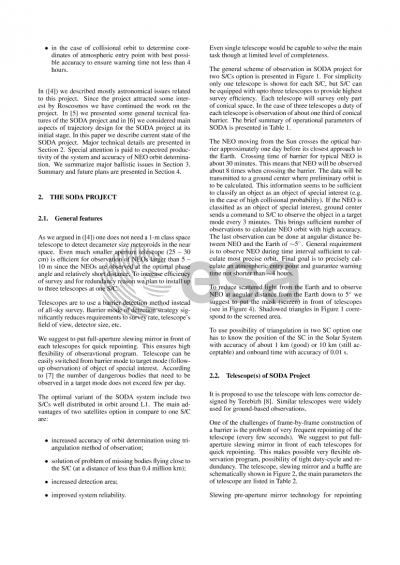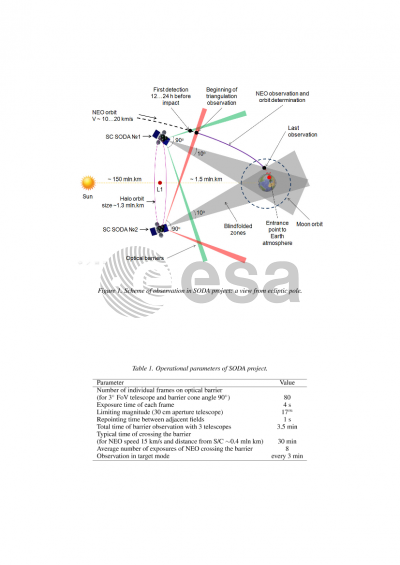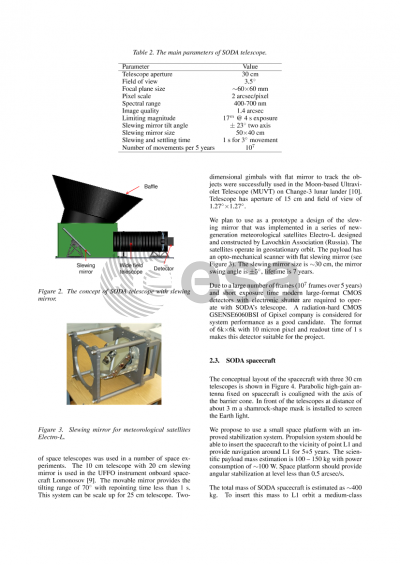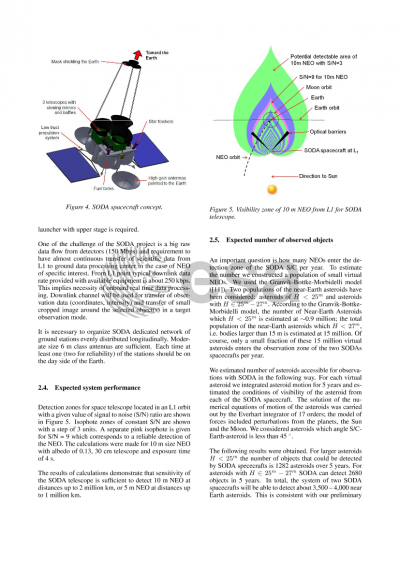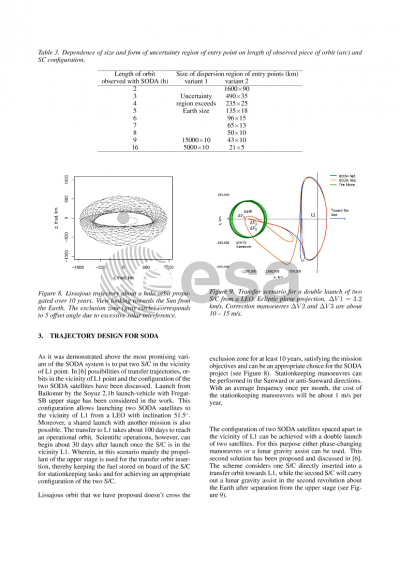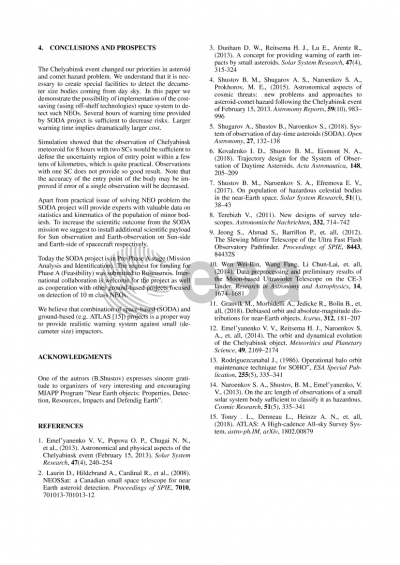Document details
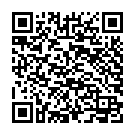
Abstract
The Chelyabinsk event of 15.02.2013 has revealed new challenges in the problem of near Earth objects (NEOs). Meteoroids of decameter size are considered nowadays as dangerous ones which implies that they should be included in the coming programs of massive detection of potentially hazardous bodies. It is impossible to detect a good share of the bodies coming from the day sky by ground based and/or near space instruments. To have an efficient system capable to detect such objects one needs to put space telescope relatively far from our planet.
We proposed the project of space system SODA (System of Observation of Day-time Asteroids) for exhaustive detection of decameter (>10 m) bodies coming from the Sun direction into the near Earth space (i.e. at distances less than ~1 million km from the Earth). The main idea of the mission is to put one or two space crafts equipped with medium-size (of about 30 cm aperture) wide-field telescopes into the vicinity of L1 point (in Earth-Sun system). This position is very comfortable to detect the bodies of interest due to relatively short distance between telescope and the asteroid and optimal phase angle. Observation will be performed in a barrier mode. The computer controlled fast slewing (pre-aperture) mirror ensures very flexible and quick changes of observational modes.
Typical NEOs flying away from the Sun will cross the barrier approximately one day before closest approach to the Earth. After the first detection the NEO its orbit can be refined by using additional observation. In the case of collisional orbit the accuracy of orbit determination should be sufficient to calculate the entry point into the Earth’s atmosphere at accuracy of 10 km in transversal direction. The typical warning time on the collision will be about 4 10 hours. According to our simulation in 5 years the SODA will discover about 3000 NEOs with size of >10 m coming into near Earth space from Sun direction. In this period at least one 10 m class impactor will be discovered.
We describe the preliminary design and status of the SODA mission. We mention additional science potential of the mission, including such options as Earth climate monitoring and Sun observation (similar to DSCOVR project’s goals). The necessity of collaboration with night-time observational systems that are focused on detection of NEOs in the near Earth space (e.g. ATLAS) is emphasized.
Preview

